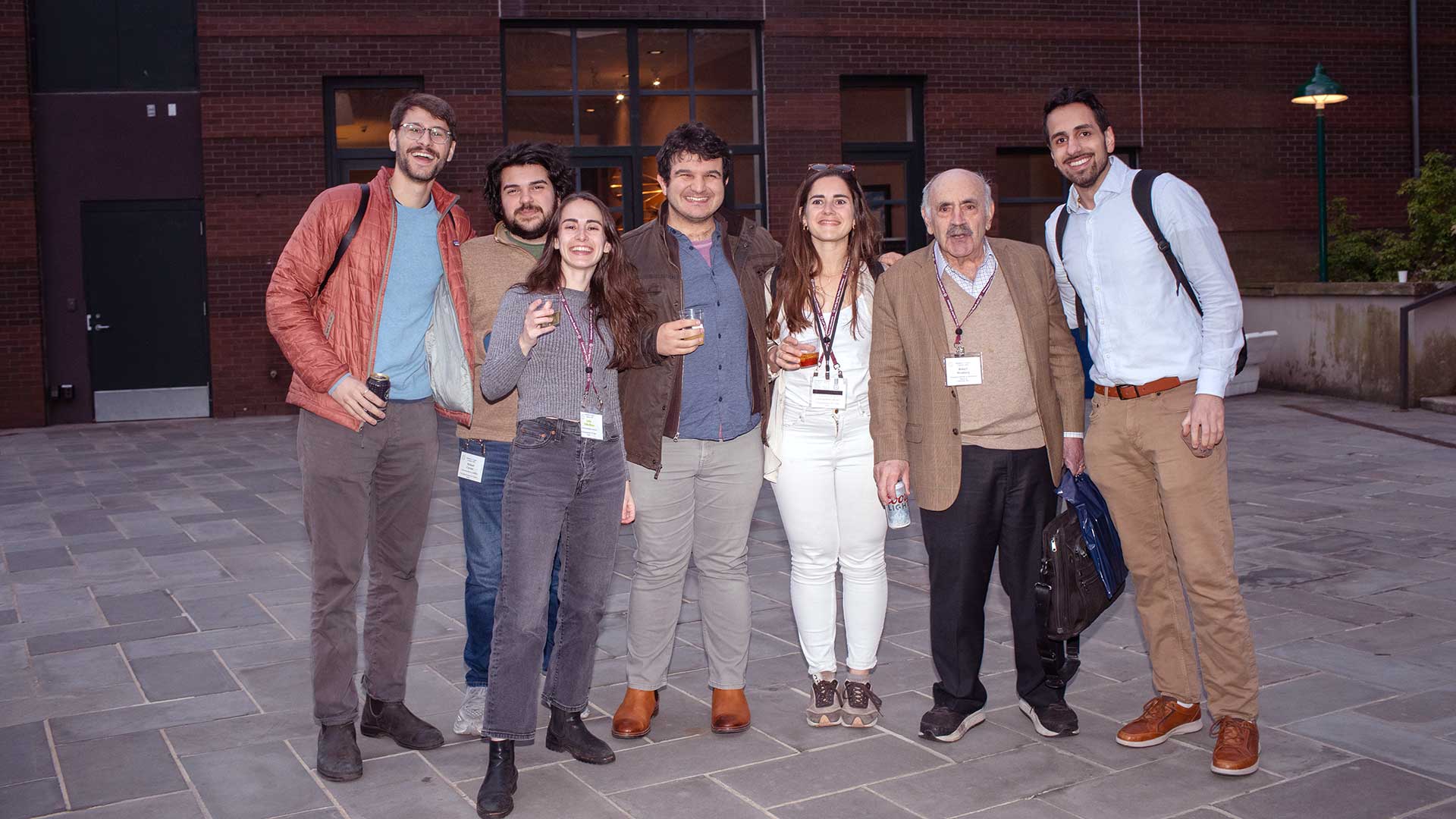On my first day, my supervisor sat me down and told me, “If you want to understand the basics of how cancer works, read this.” She handed me a paper called “The Hallmarks of Cancer.” Over the next couple of months, that manuscript’s 11 pages became my personal mantra. Perfectly written, “The Hallmarks of Cancer” summarizes the six essential alterations cells undergo that collectively drive cancer development, including a newly acquired limitless growth potential, evasion of cell death, and an ability to invade other tissues through metastasis. I would encounter the author’s name, Robert Weinberg, hundreds of times throughout my studies. It’s the kind of name that shows up over and over in lecture slides and gets referenced as an author of recommended textbooks. It is a name so glorified in the field of cancer genetics that I, a biochemistry student from Spain, struggled to think of Robert Weinberg as a real human being.
Fast-forward seven years, and I am grabbing the last pancakes at breakfast—one for me, one for Robert Weinberg. But now I call him Bob. I am a Ph.D. student at the Cold Spring Harbor Laboratory (CSHL) School of Biological Sciences, still doing cancer research, and I know “The Hallmarks of Cancer” by heart. I really cannot enumerate all the opportunities this institution has provided me, but I now know precisely where to start. A couple of weeks ago, I attended the CSHL Center for Humanities’ meeting on Cancer Genetics. As a CSHL student, I am lucky enough to be able to participate in any meeting happening on campus. Each year, there are dozens. However, this was a meeting like no other. This one focused on the history of cancer genetics research, and the talks were given by those who lived and made that history, the very same scientists who first discovered many of the genes that give rise to cancer. The list included Robert Weinberg, of course, and also eight Nobel laureates, among many other legends.
Press play to meet with four such legends as they share their impressions of CSHL’s Cancer Genetics meeting.
Every morning for the past three years, I make my way to the north shore of Long Island. I go into the dos Santos lab, and I design and carry out experiments to better understand the mechanisms of breast cancer development. For this, we use mice that have been engineered to carry a mutation in BRCA1, the most commonly mutated gene in women with breast cancer. To me, the initial identification of BRCA1 as a tumor suppressor (a gene that, if not mutated, helps avoid cancer onset) has always seemed a bit like witchcraft. Imagine my excitement when, during the Cancer Genetics meeting, I got to hear about the discoveries of BRCA1 and BRCA2 firsthand from the very first scientists who identified them, Mary-Claire King and Alan Ashworth.
Listening to the biggest names in the field of cancer biology, the ones I thought I would only see in textbooks, speak personally about their breakthroughs was priceless. However, that is not the only aspect of the meeting that I will carry with me forever. The feeling of camaraderie and excitement among all the scientists in attendance was palpable—from the way their talks intertwined with each other’s research to the way the dinner tables were filled with laughter and inside jokes, the kind you only hear from lab-mates with whom you have worked for a very long time.
Cancer Genetics: History & Consequences taught me that to make the most remarkable, life-changing advances in science, you need to surround yourself with friends who share your love for discovery. And how lucky am I to get to spend years of my life surrounded by my fellow scientists and friends at Cold Spring Harbor!
